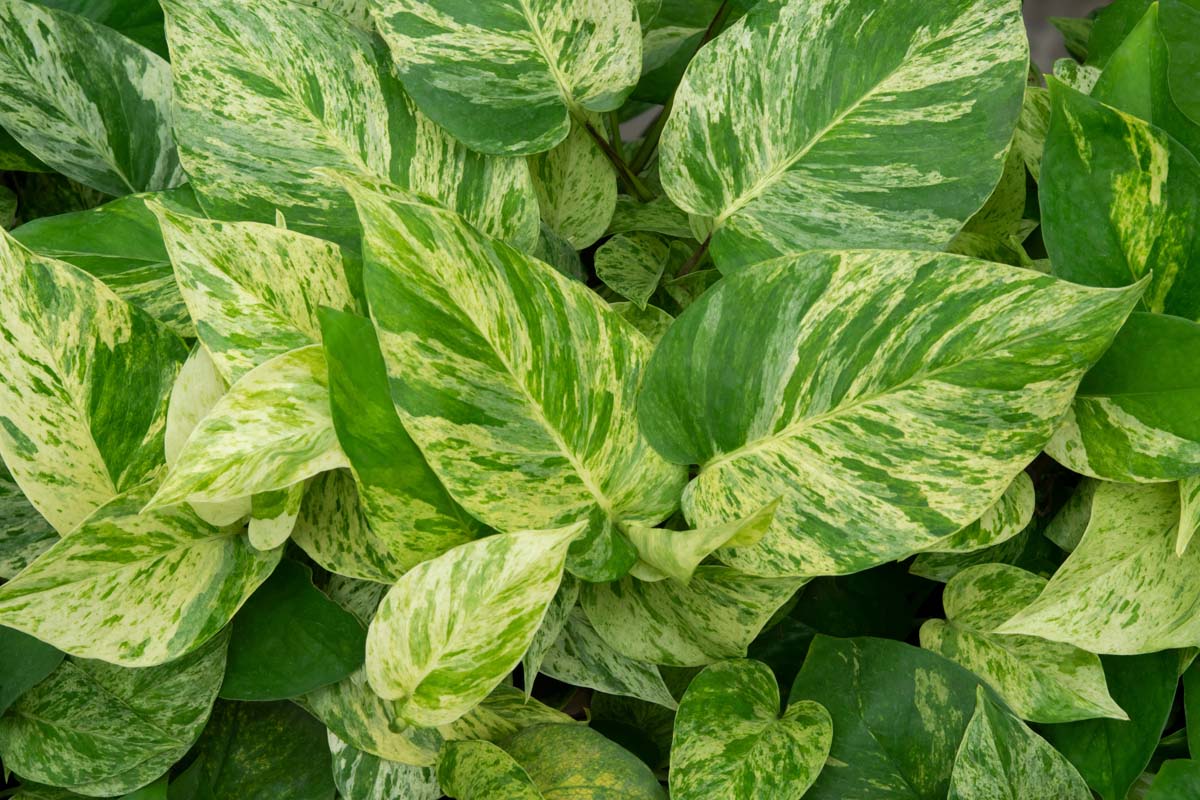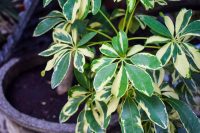Is pothos toxic to dogs?
Pothos is toxic to dogs, the toxic principle is insoluble calcium oxalate crystals known as raphides that penetrate the oral mucosa causing acute pain and burning. Insoluble calcium oxalate crystals are created by crystal idioblasts and are commonly arranged in bundles known as raphides. The function of insoluble calcium oxalate crystals is to protect the plants from herbivory as well as calcium regulation.
What is pothos?

- Family: Araceae
- Botanical name: Epipremnum aureum
- Common names: Pothos, Golden pothos, Devil’s ivy, Taro vine, Ceylon creeper, Ivy arum, Money plant, Hunter’s robe
- Plant type: Vine
- Toxicity: Toxic to dogs
- Toxic parts: All parts
- Severity: Mild to moderate
- Toxic properties: Insoluble calcium oxalates
Pothos (Epipremnum aureum) is a species of vine native to the Society Islands of French Polynesia but widely naturalised in Australia, Indonesia, China, Japan and India. The heart-shaped leaves comprise of solid green or white/cream and green variegated patterns.
Pothos is a popular indoor plant, due to its ease of care, which has earned it the name devil’s ivy. Its preferred position is filtered sun, but also grows well in full sun or shade.
Pothos varieties:
- Golden pothos
- Neon pothos
- Jade pothos
- Marble queen pothos
- Manjula pothos
- Pearls and jade pothos
- Glacier pothos
- Cebu blue pothos
- Hawaiian pothos
- Jessenia pothos
The University of California has placed pothos into toxicity classes three (oxalates) and four (dermatitis)
- Oxalates: The juice or sap of these plants contains oxalate crystals. These needle-shaped crystals can irritate the skin, mouth, tongue, and throat, resulting in throat swelling, breathing difficulties, burning pain, and stomach upset. Call the Poison Control Center or your doctor if any of these symptoms appear following ingestion of plants.
- Dermatitis: The juice, sap, or thorns of these plants may cause a skin rash or irritation. Wash the affected area of skin with soap and water as soon as possible after contact. The rashes may be very serious and painful. Call the Poison Control Center or your doctor if symptoms appear following contact with the plants.
Clinical signs
When chewed, pothos releases needle-like calcium oxalate crystals which penetrate the delicate oral mucosa causing intense pain and burning. Common symptoms include:
- Drooling
- Pawing at the mouth
- Loss of appetite
- Vomiting
- Pawing at the mouth
- Swelling of the lips, tongue and oropharynx
- Difficulty breathing (rare)
- Ocular or dermal exposure can cause pain and skin dermatitis
Most signs look more dramatic than they are, however, in some cases, exposure to calcium oxalate crystals can lead to swelling and difficulty breathing. This is a medical emergency that requires immediate attention.
How is pothos toxicity treated?
Mild cases can usually be managed at home by removing any remaining plant matter from the mouth and offering a drink of something tasty like milk, onion free chicken stock or tuna.
If swelling or difficulty breathing develops, seek veterinary care immediately.
Veterinary treatment will depend on the severity of presenting signs. Subcutaneous or intravenous fluids may be administered to vomiting dogs to treat or prevent dehydration and antiemetics may be prescribed to control vomiting.
Is it safe to keep pothos in homes with pets?
Many popular indoor plants contain insoluble calcium oxalate crystals which can cause pain if ingested. In most cases, the dog will stop chewing the plant immediately and severe symptoms such as difficulty breathing are rare. There is one case of an emergency tracheotomy due to swelling induced by insoluble calcium oxalate ingestion.
Puppies are at increased risk due to their curious nature and tendency to chew on anything and everything. If you do have a puppy or dog who shows an interest in houseplants, remove the plant or grow it in a hanging basket out of reach of the dog.
Julia is a writer and landscape consultant from Wollongong with a love of horticulture. She had been an avid gardener for over 30 years, collects rare variegated plants and is a home orchardist. Julia is passionate about learning and sharing her knowledge of plant propagation and plant toxicology. Whether it’s giving advice on landscape projects or sharing tips on growing, Julia enjoys helping people make their gardens flourish.




